Psychology > QUESTIONS & ANSWERS > Grand Canyon University:PSY 520 Topic 1 Exercise 1, Chapter 1 to 4;Verified Answers(Graded A) (All)
Grand Canyon University:PSY 520 Topic 1 Exercise 1, Chapter 1 to 4;Verified Answers(Graded A)
Document Content and Description Below
1. Chapter 1, numbers 1.8 and 1.9 2. Chapter 2, numbers 2.14, 2.17, and 2.18 3. Chapter 3, numbers 3.13, 3.14, 3.18, and 3.19 4. Chapter 4, numbers 4.9, 4.14, 4.17, and 4.19 1.8 Indicate whether... each of the following studies is an experiment or an observational study. If it is an experiment, identify the independent variable and note any possible confounding variables. (a) A psychologist uses chimpanzees to test the notion that more crowded living conditions trigger aggressive behavior. Chimps are placed, according to an impartial assignment rule, in cages with either one, several, or many other chimps. Subsequently, during a standard observation period, each chimp is assigned a score based on its aggressive behavior toward a chimp like stuffed doll. Experimental Independent variable- number of chimps in each cage Possible confounding variable- if the chimp being tested is already aggressive by nature (b) An investigator wishes to test whether, when compared with recognized, professional scientists, recognized, professional artists tend to be born under different astrological signs. Observational No independent variable No confounding variable (c) To determine whether there is a relationship between the sexual codes of primitive tribes and their behavior toward neighboring tribes, an anthropologist consults available records, classifying each tribe on the basis of its sexual codes (permissive or repressive) and its behavior toward neighboring tribes (friendly or hostile). Observational No independent variable Confounding variable (d) In a study of group problem solving, an investigator assigns college students to groups of two, three, or four students and measures the amount of time required by each group to solve a complex puzzle. Experimental Independent Variable- number of students in the group Confounding variable – IQ of each student (e) A school psychologist wishes to determine whether reading comprehension scores are related to the number of months of formal education, as reported on school transcripts, for a group of 12- year-old migrant children. Observational No independent Variable No Confounding variable (f) To determine whether Graduate Record Exam (GRE) scores can be increased by cramming, an investigator allows college students to choose to participate in either a GRE test-taking workshop or a control (non-test-taking) workshop and then compares the GRE scores earned subsequently by the two groups of students. Experimental Independent variable- test taking workshop or non test taking workshop Confounding variable- students test taking skills; choosing a workshop to be with fellow classmates (since student can choose) (g) A social scientist wishes to determine whether there is a relationship between the attractiveness scores (on a 100-point scale) assigned to college students by a panel of peers and their scores on a paper-and-pencil test of anxiety. observational No independent variable No confounding variable (h) A political scientist wishes to determine whether males and females differ with respect to their attitudes toward defense spending by the federal government. She asks each person if he or she thinks that the current level of defense spending should be increased, remain the same, or be decreased. Observational No independent variable No confounding variable 1.9 Recent studies, as summarized, for example, in E. Mortensen et al. (2002). The association between duration of breastfeeding and adult intelligence. Journal of the American Medical Association , 287 , 2365–2371, suggest that breast-feeding of infants may increase their subsequent cognitive ((IQ) development. Both experiments and observational studies are cited. (a ) What determines whether some of these studies are experiments? Whether or not there is a control group and an experimental group in the studies (b) Name at least two potential confounding variables controlled by breast-feeding experiments. Genetics could be a confounding variable as well as parenting methods 2.14 (a) Construct a frequency distribution for the number of difference residences occupied by graduating seniors during their college career, namely 1, 4, 2, 3, 3, 1, 6, 7, 4, 3, 3, 9, 2, 4, 2, 2, 3, 2, 3, 4, 4, 2, 3, 3, 5 Seniors Frequency Percent Valid Percent Cumulative Percent Valid 1 2 8.0 8.0 8.0 2 6 24.0 24.0 32.0 3 8 32.0 32.0 64.0 4 5 20.0 20.0 84.0 5 1 4.0 4.0 88.0 6 1 4.0 4.0 92.0 7 1 4.0 4.0 96.0 9 1 4.0 4.0 100.0 Total 25 100.0 100.0 (b) What is the shape of this distribution? I would say that the shape is positively skewed 2.17 Are there any conspicuous differences between the two distributions in the following table (one refl ecting the ages of all residents of a small town and the other reflecting the ages of all U.S. residents)? (a) To help make the desired comparison, convert the frequencies ( f ) for the small town to percentages. 14 13 12 10 11 9 8 7 6 5 5 3 2 1 (b) Describe any seemingly conspicuous [Show More]
Last updated: 2 years ago
Preview 1 out of 10 pages

Buy this document to get the full access instantly
Instant Download Access after purchase
Buy NowInstant download
We Accept:

Reviews( 0 )
$9.50
Can't find what you want? Try our AI powered Search
Document information
Connected school, study & course
About the document
Uploaded On
May 06, 2022
Number of pages
10
Written in
Additional information
This document has been written for:
Uploaded
May 06, 2022
Downloads
0
Views
162

.png)



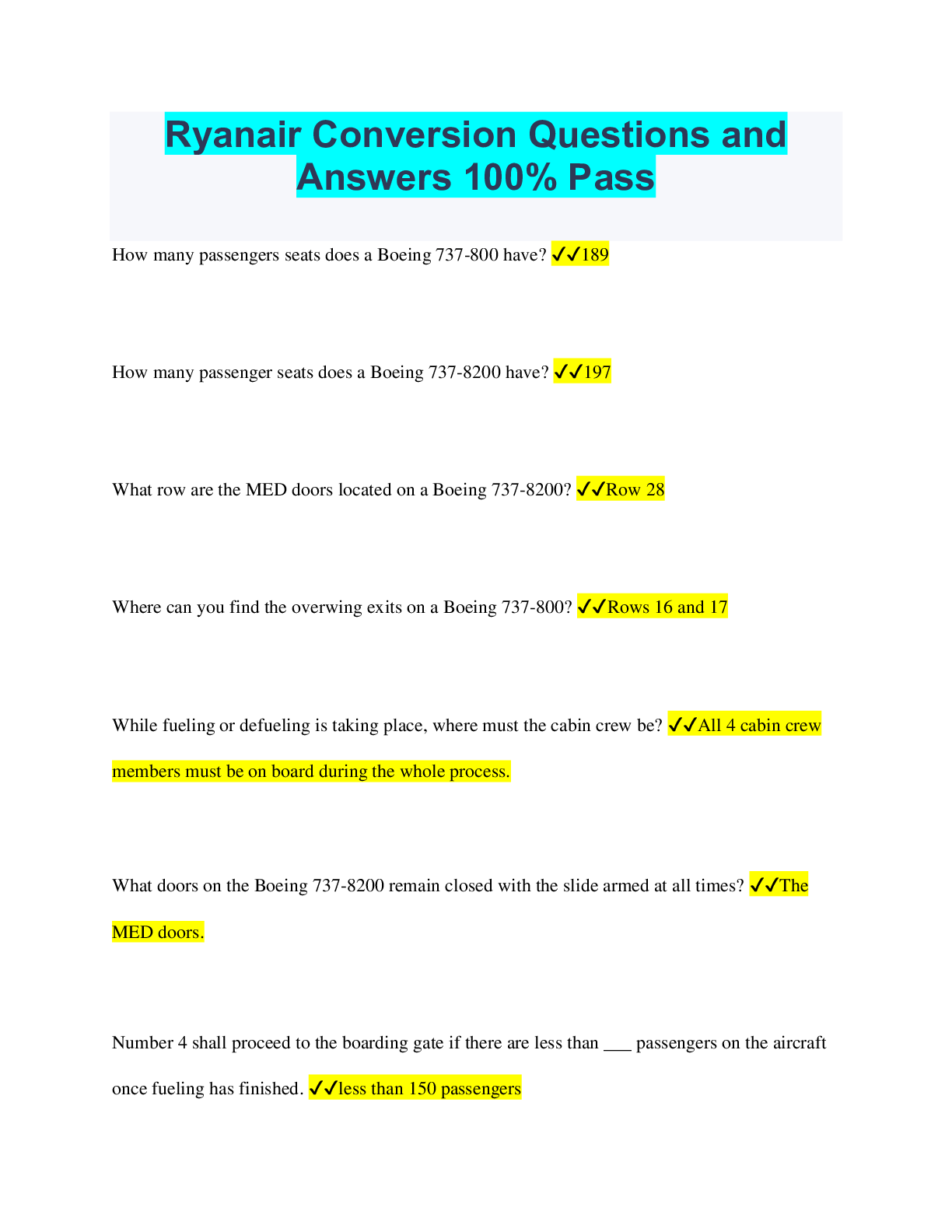



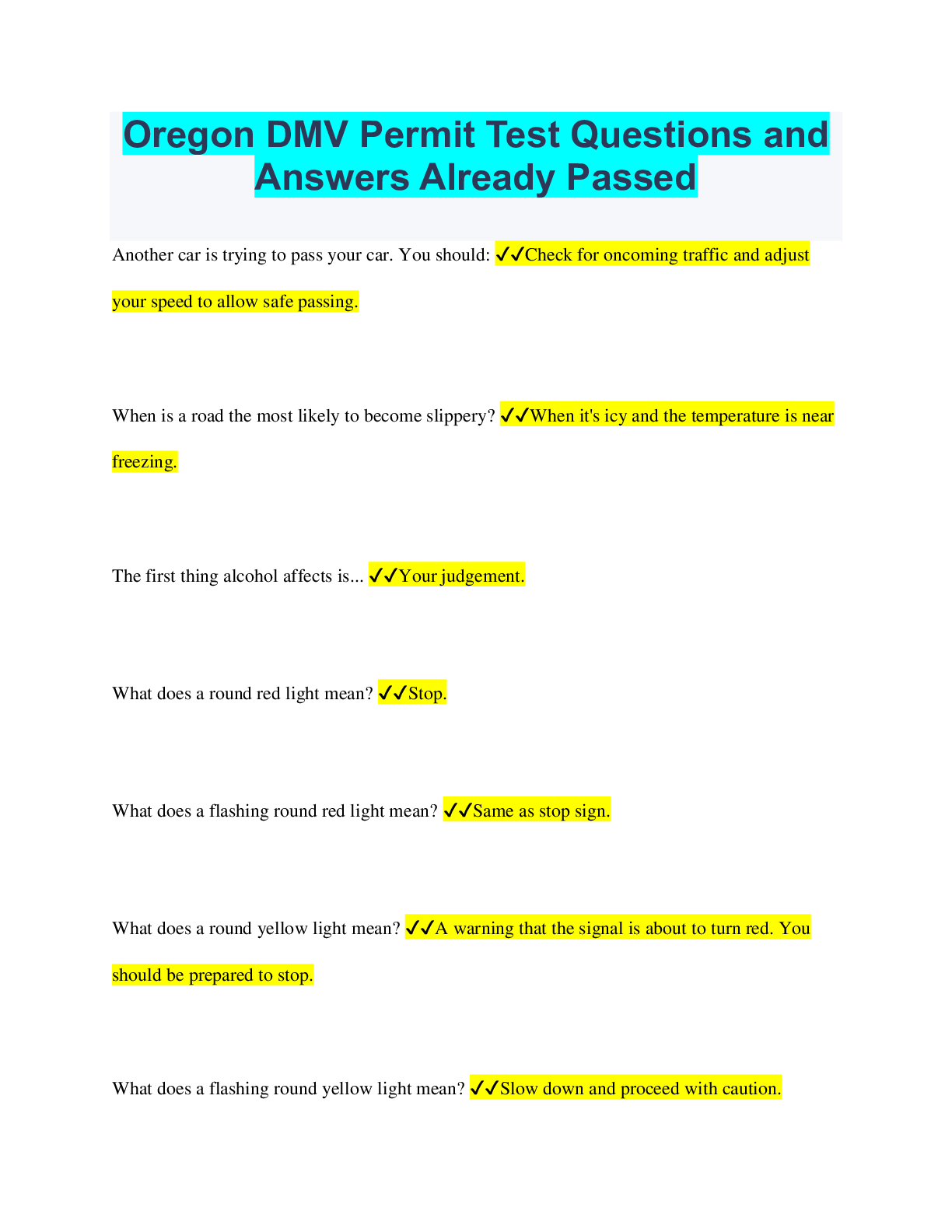

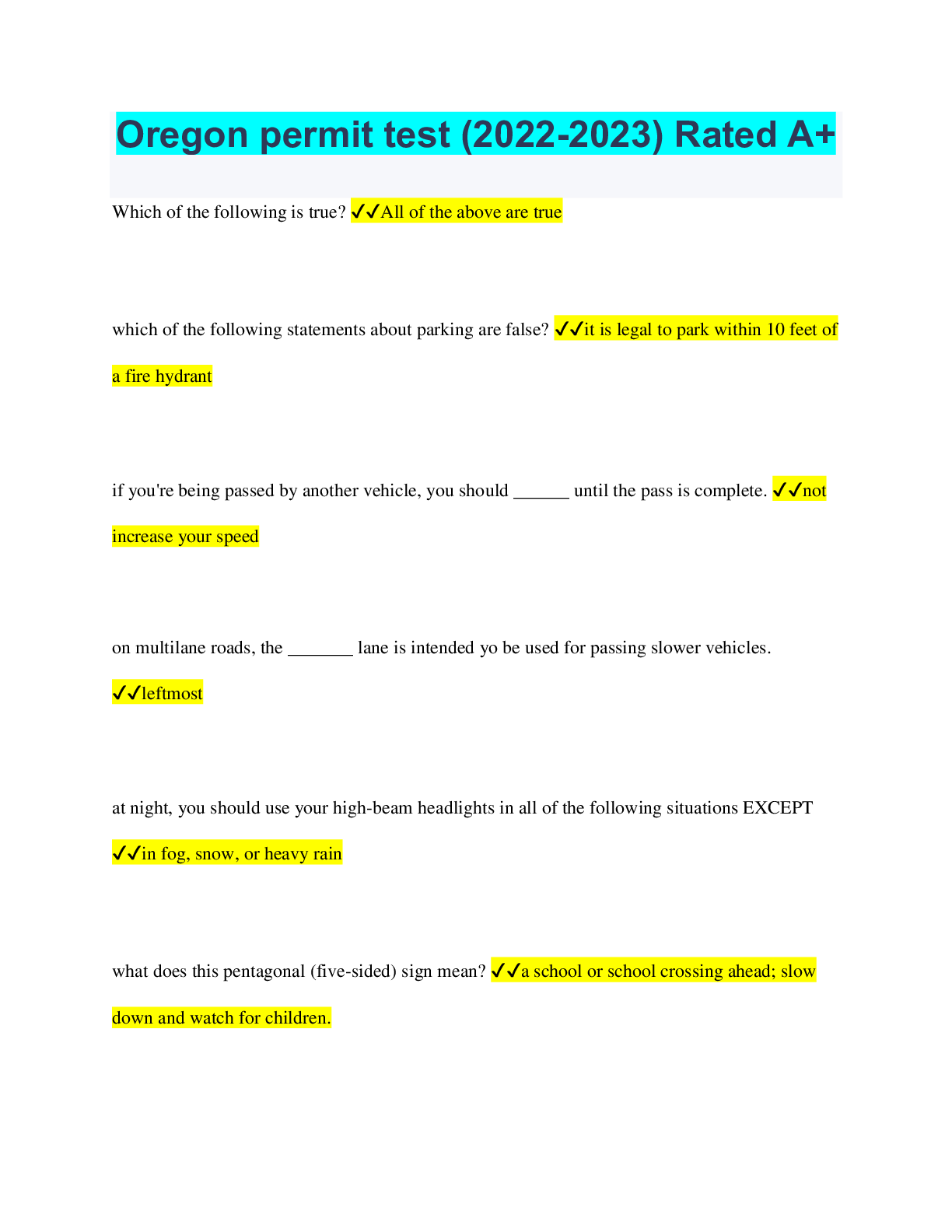
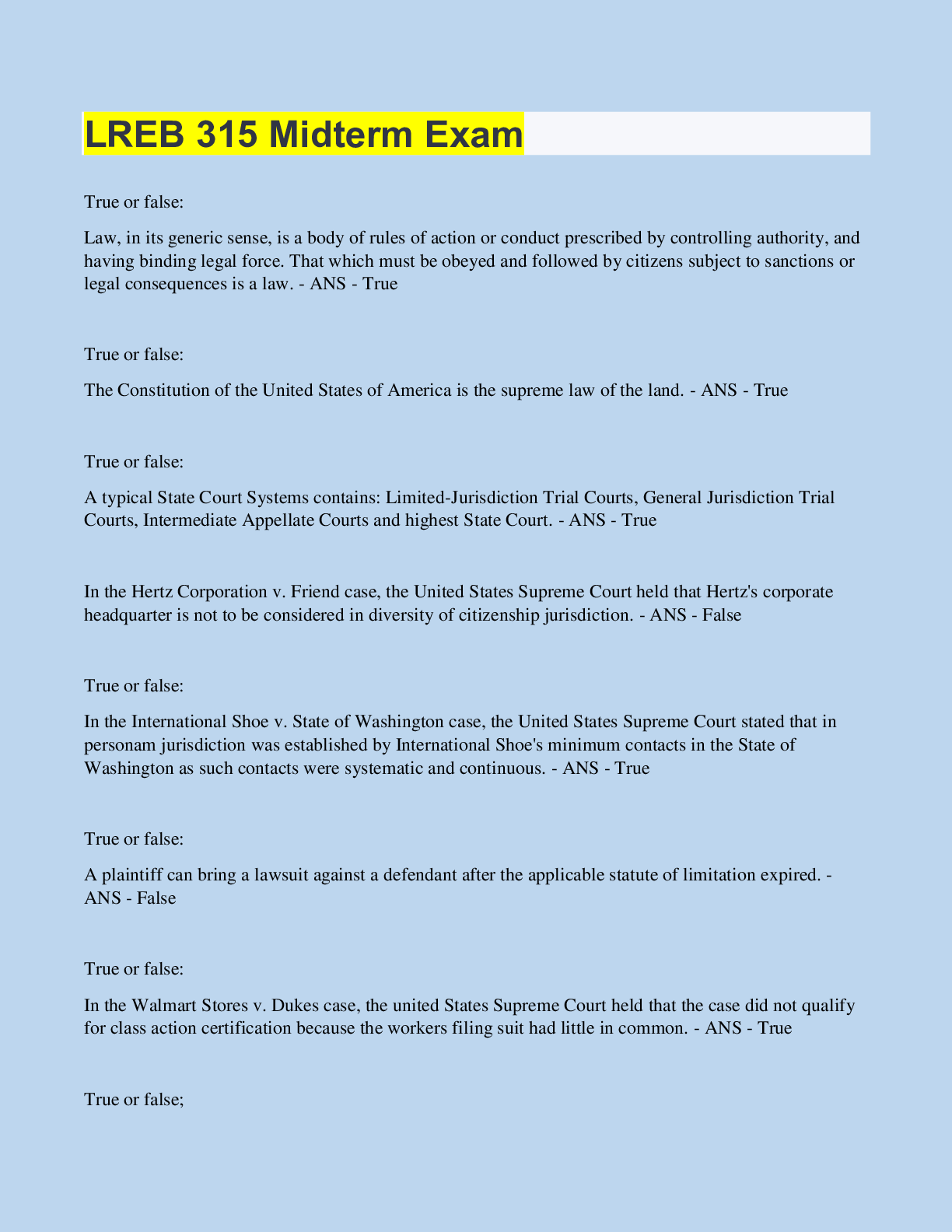
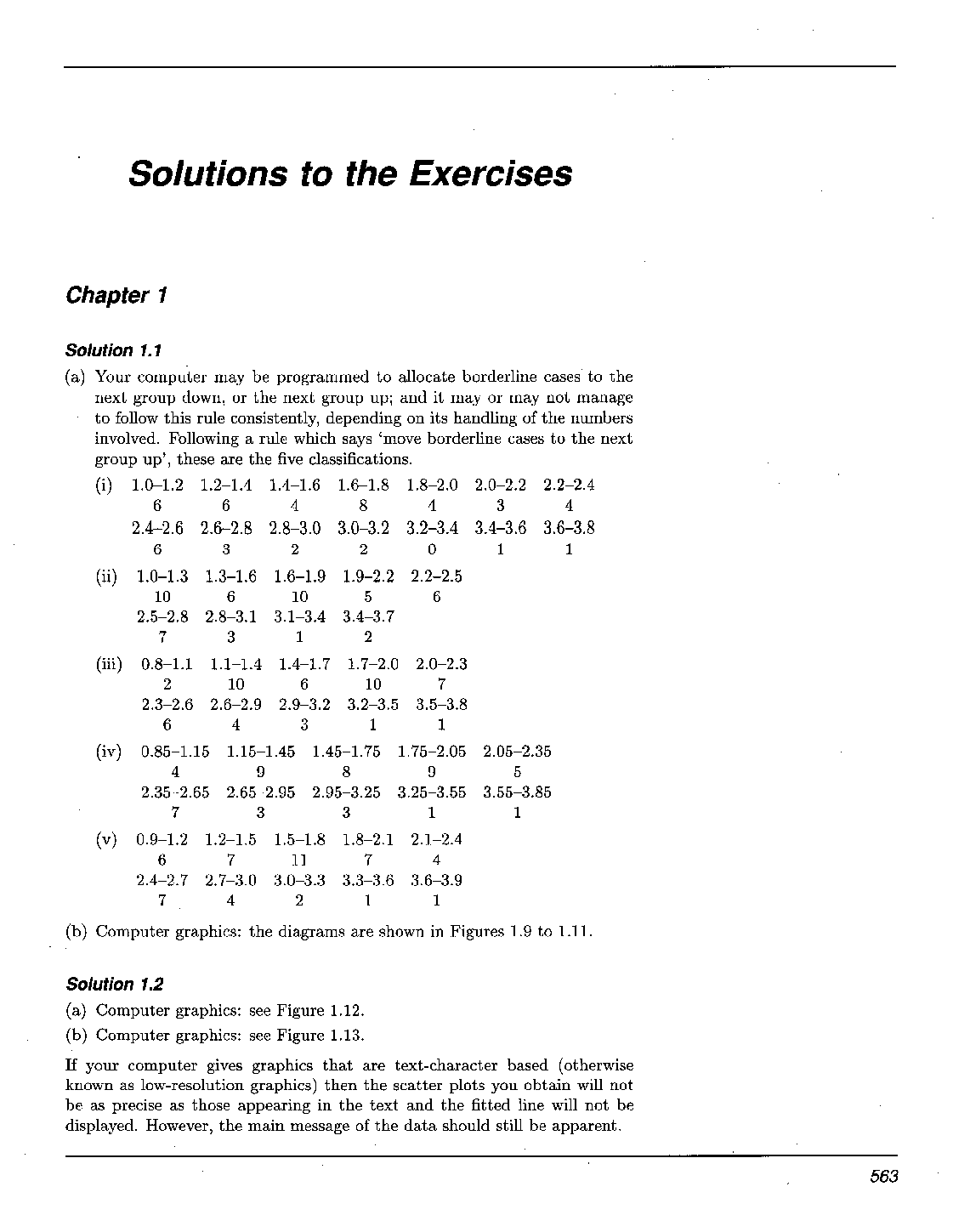


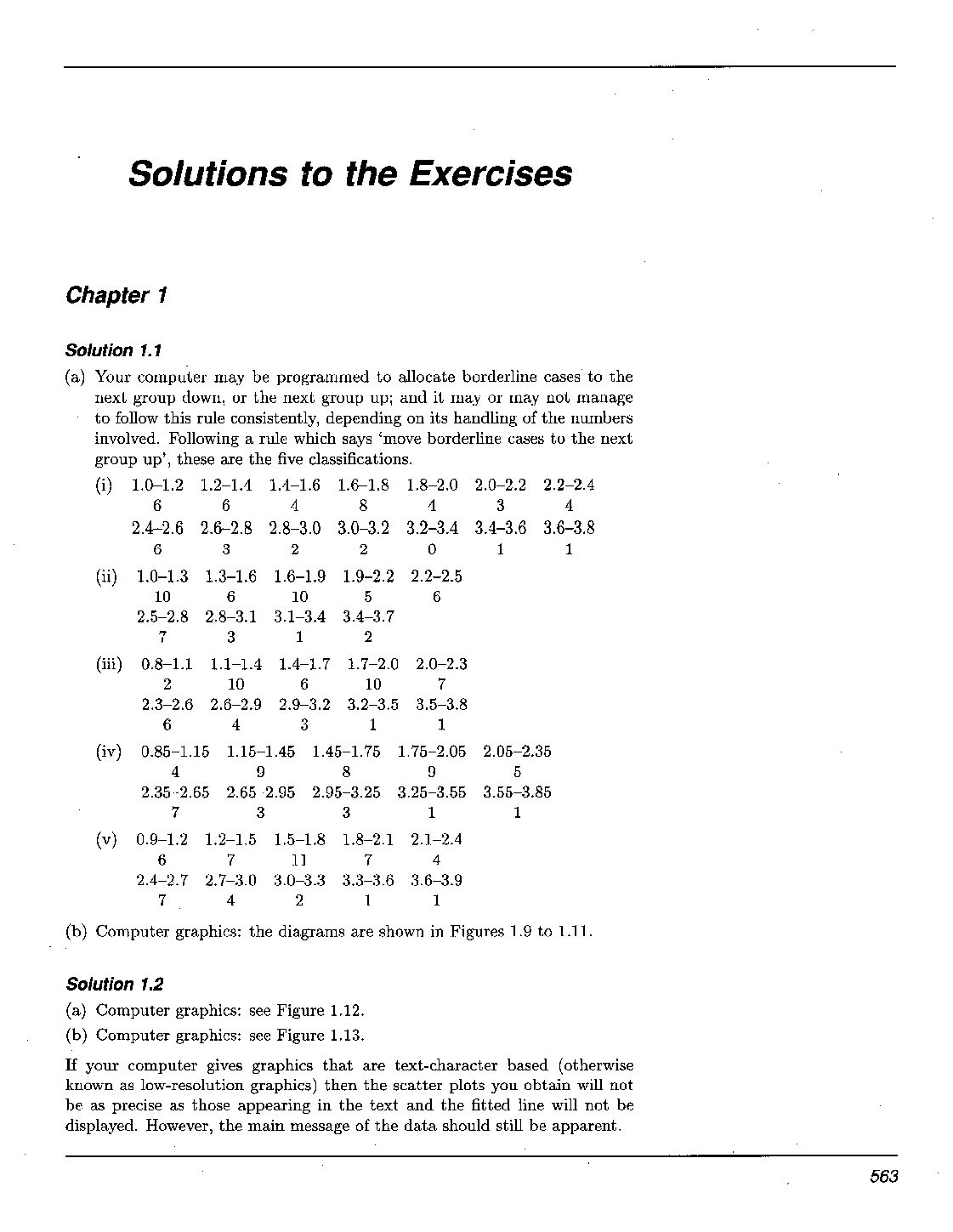
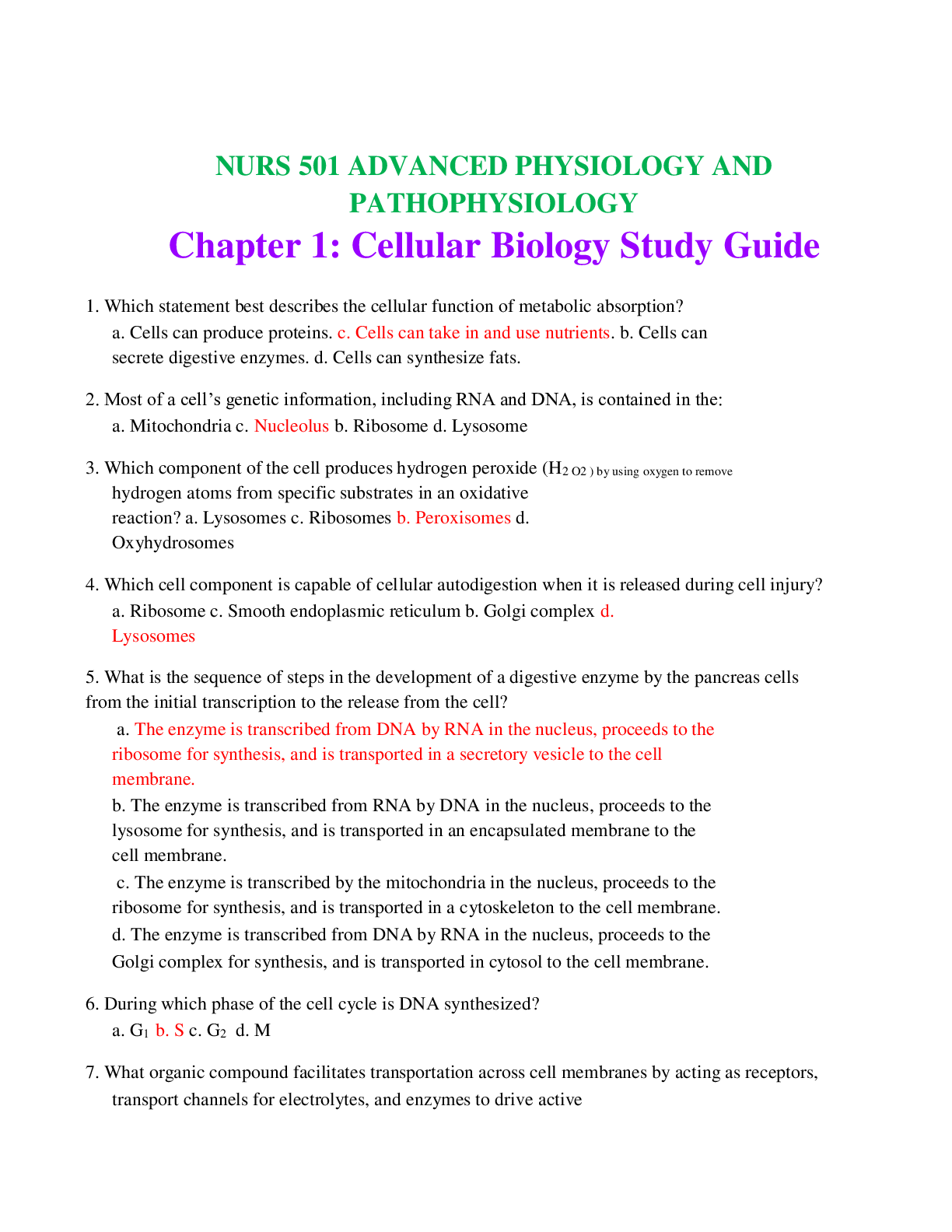
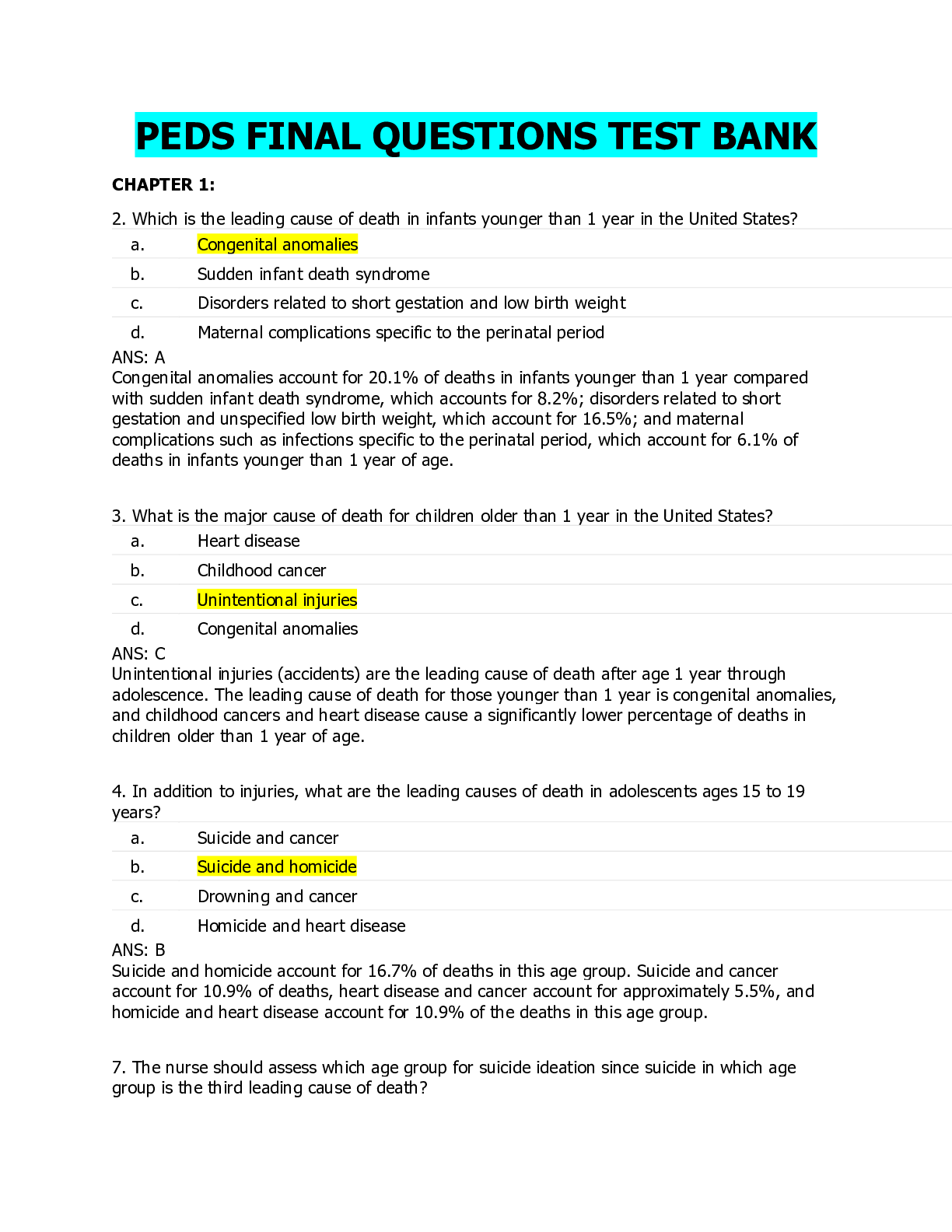
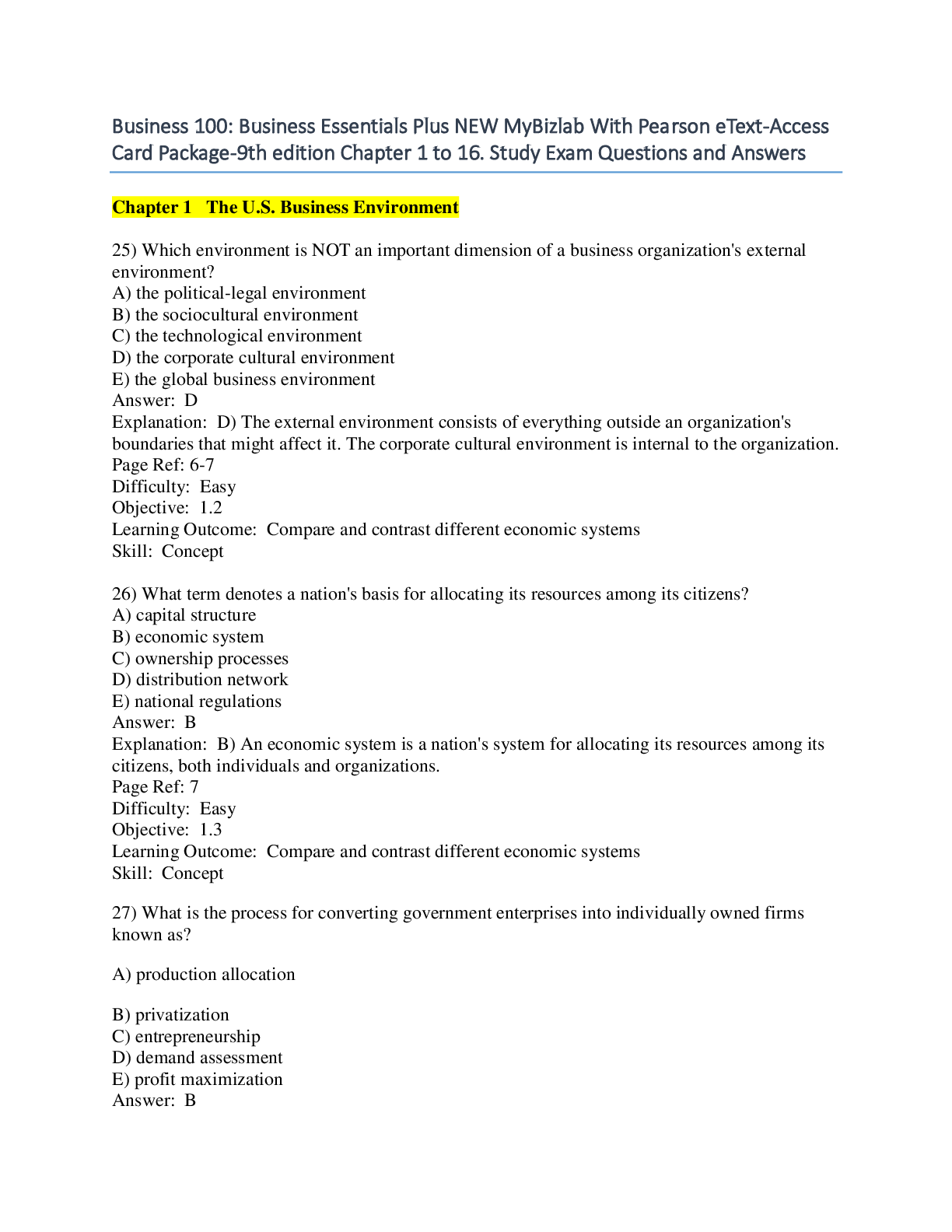

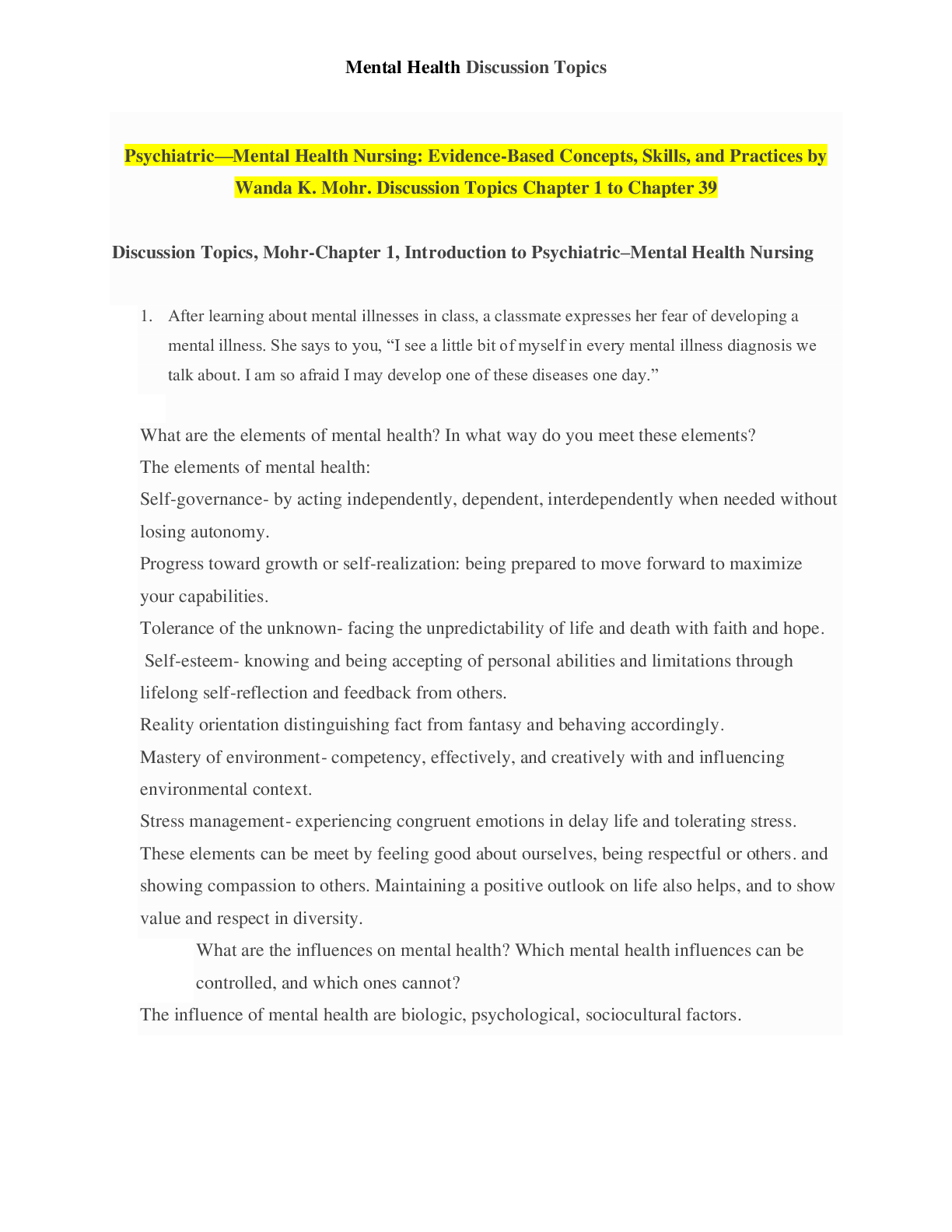

 2020 ans.png)


